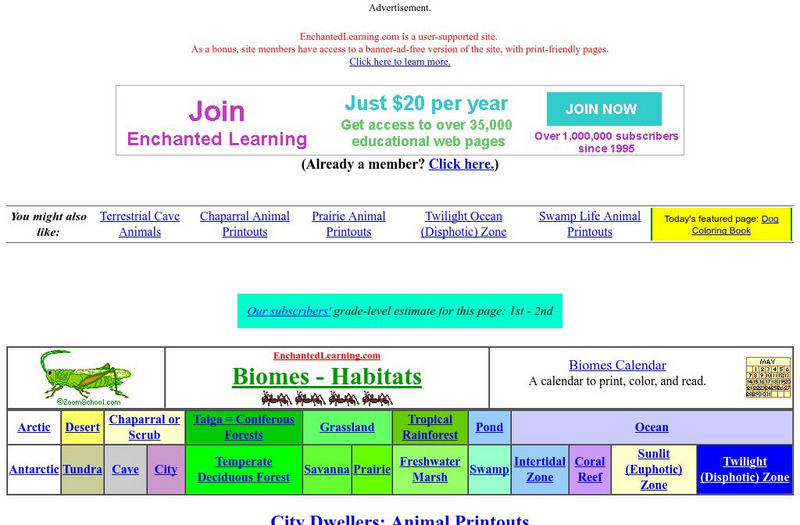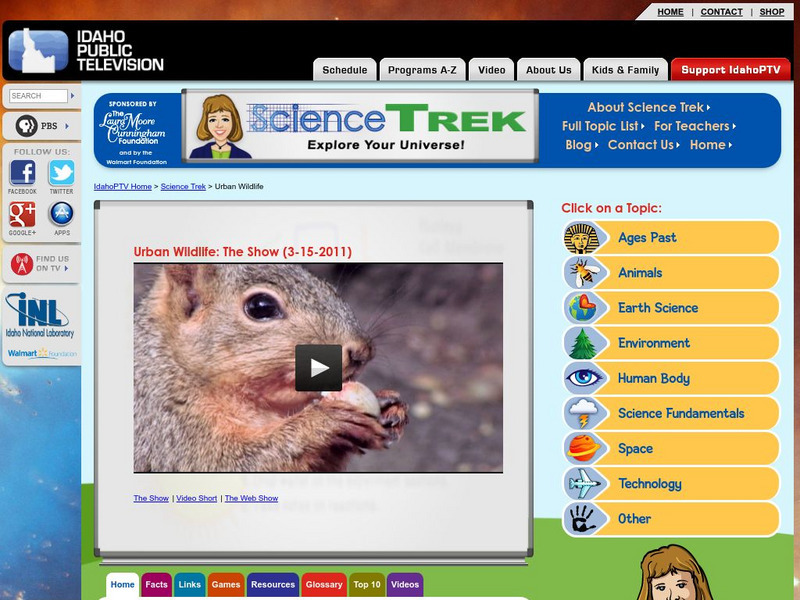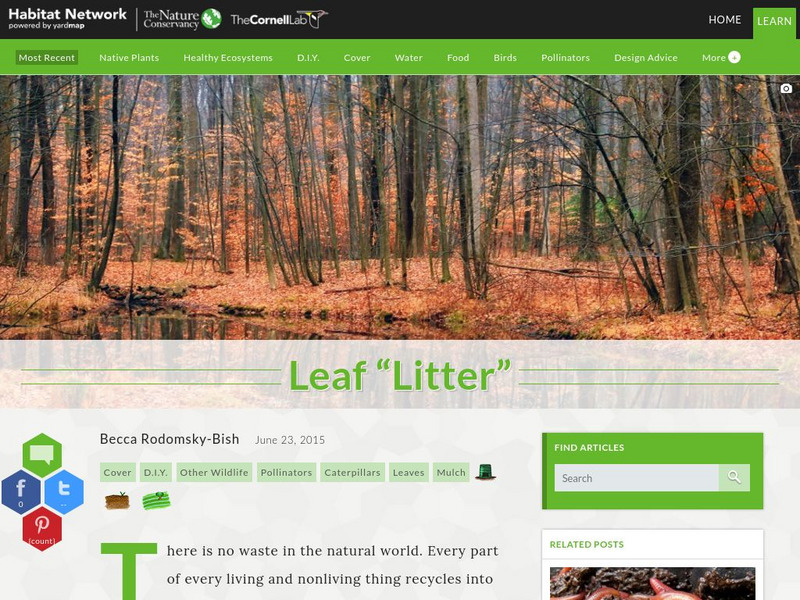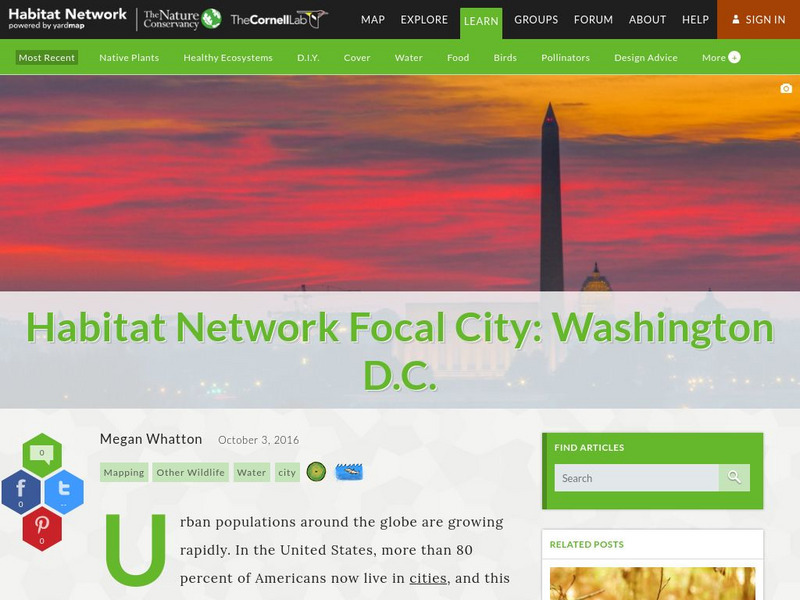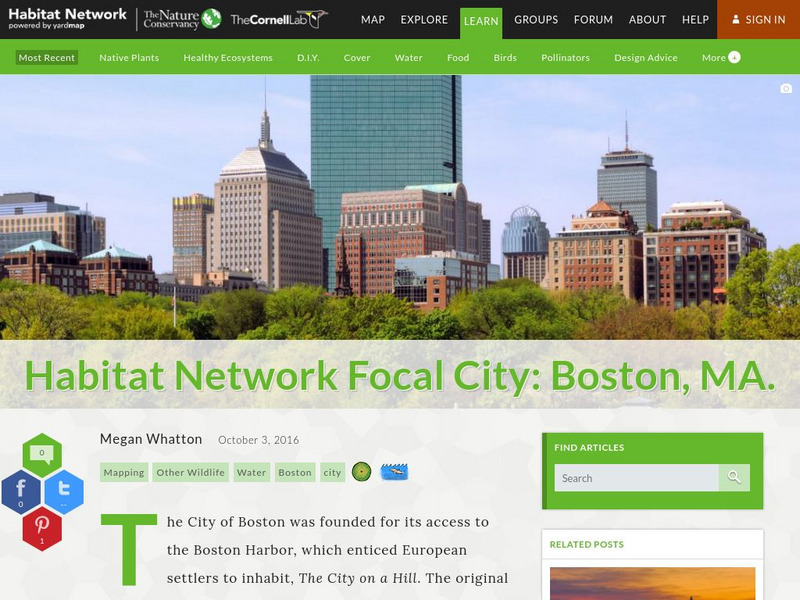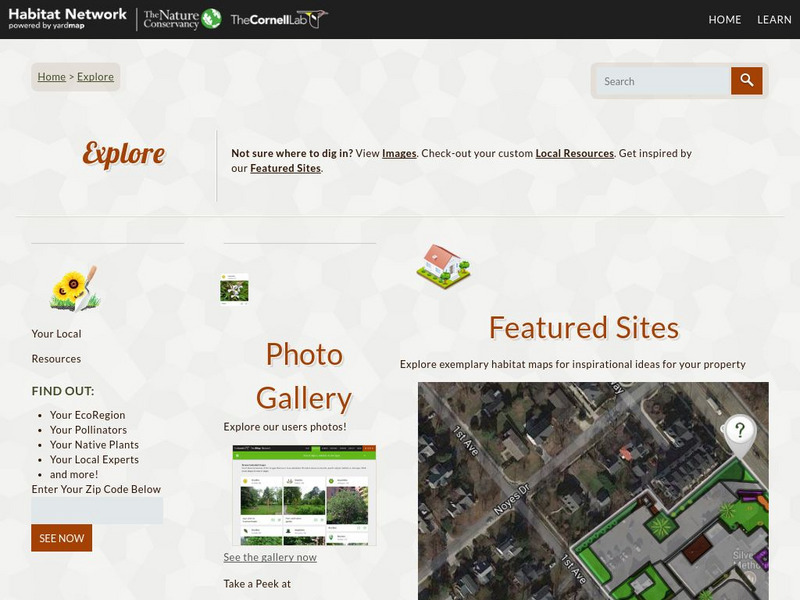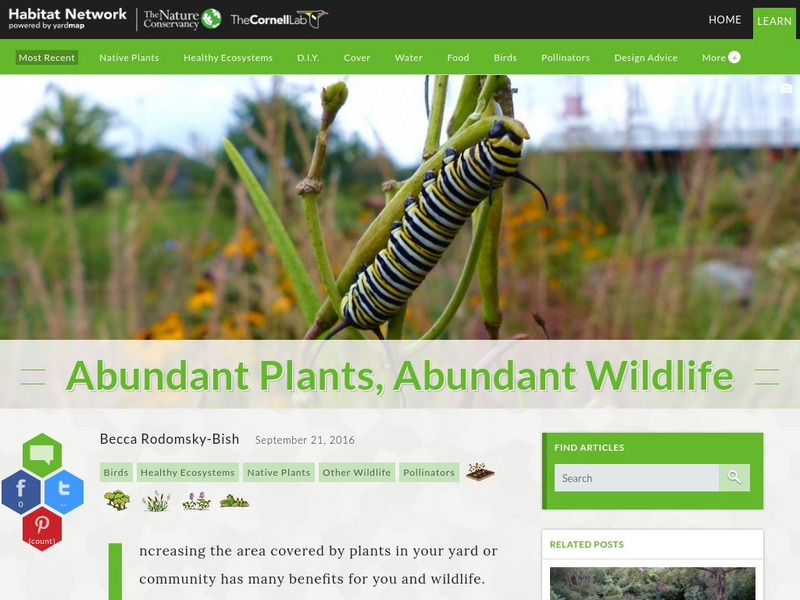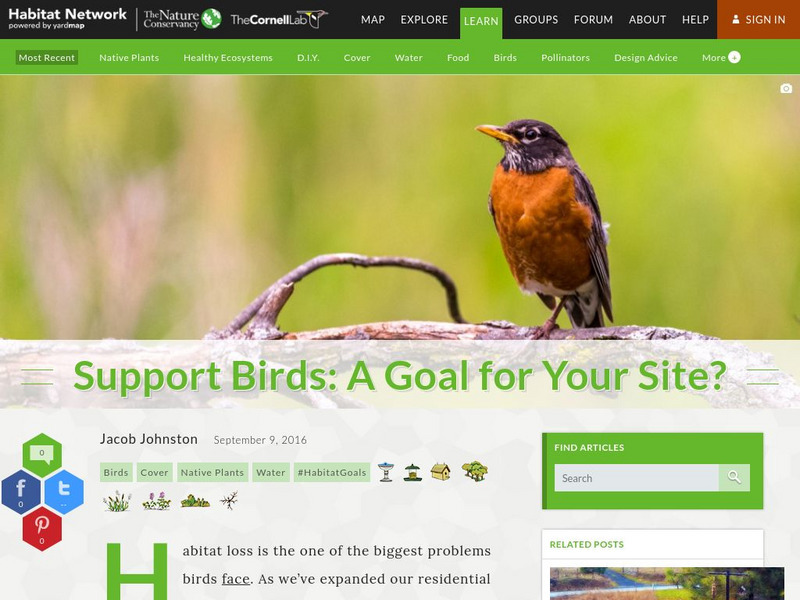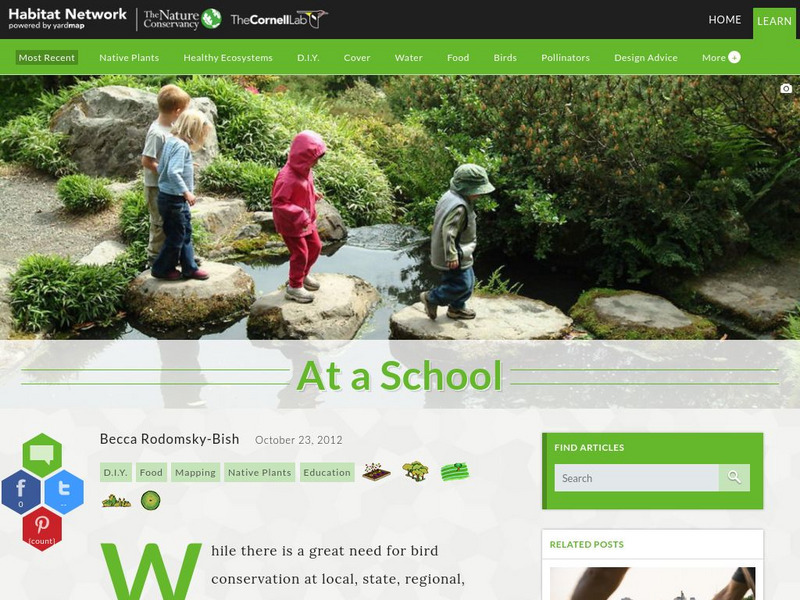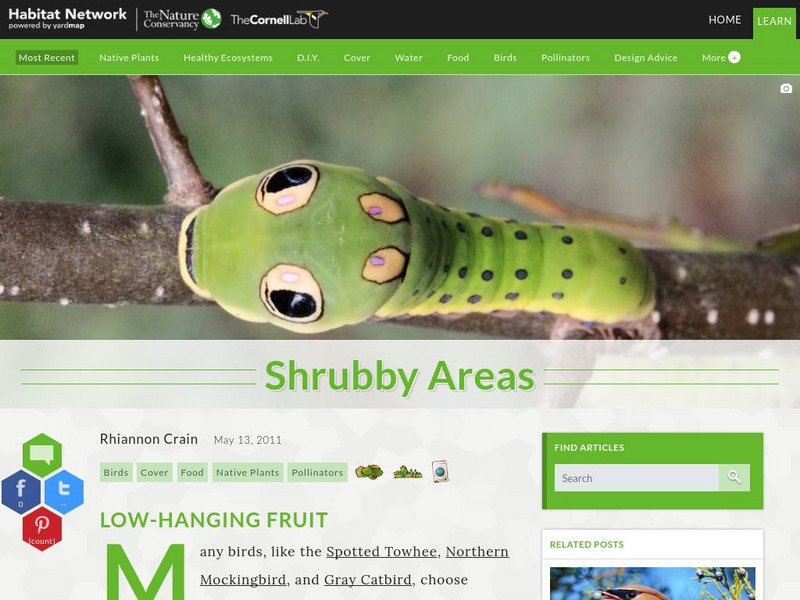Science Education Resource Center at Carleton College
Serc: Phenology and Weatherguide Calendar
An activity where students observe the grounds around their school to study the plant and animal life cycle. Students will make a map of the school to keep track of their observations. Students will also compare their phenology calendar...
National Audubon Society
National Audubon Society: Audubon Adventures: City Life for Wildlife
Colorful and engaging resources for learning about urban-dwelling wildlife. There is a 4-page guide to urban animals and a multiple-choice quiz. Visit the Teachers' Lounge area to find resources for teaching about this topic, including...
Unite for Literacy
Unite for Literacy: Animals: The Birds I'll See
Which birds might you see in your yard or park and which ones are likely not there? Includes audio narration in 18 additional languages with text in English.
National Wildlife Federation
National Wildlife Federation: Bright Lights, Bird City
Birds of prey--raptors--are increasingly making urban areas their own. Here is an interesting look at a change of habitat for these magnificent birds.
National Wildlife Federation
National Wildlife Federation: Survival by Handout?
Endangered species are often elusive and human sightings of the animals can be rare. The San Joaquin kit fox, however, listed as endangered since 1967 has learned to survive in urban and suburban areas.
Enchanted Learning
Enchanted Learning: City Dwellers
What kind of animals live in the city? What comes to mind? Isn't the city a strange place for animals to live? What does "synanthropization" mean? Find answers to these questions in printout form that you can color and keep.
PBS
Idaho Ptv: Dialogue for Kids: Urban Wildlife
A collection of facts and links on the topic of urban wildlife. The facts cover the types of animals in an urban area, urban habitats, what they eat, large wildlife, and how to get along with and enjoy urban wildlife. Includes a reading...
Cornell Lab of Ornithology
Habitat Network: Find Out How Your Lawn Measures Up
Based on a Calfornia ordinance that limits the size of lawns, Habitat Network offers some alternatives for a species-rich backyard.
Cornell Lab of Ornithology
Habitat Network: The (Un)importance of Lawn
Find out why it is important to grow more than just a lawn full of grass in a backyard habitat.
Cornell Lab of Ornithology
Habitat Network: Habitat Feature: Bare Earth for Native Pollinators
Find out why keeping a part of your yard as bare ground is important for providing nesting habitat for native bees.
Cornell Lab of Ornithology
Habitat Network: Leaf Litter
Leaf-litter plays many important ecological roles. Find out some of the ways leaves are secretly at work in your gardens and parks.
Cornell Lab of Ornithology
Habitat Network: Habitat Network Focal City: Washington d.c.
See how this Northeastern city's habitat has developed and changed throughout its history.
Cornell Lab of Ornithology
Habitat Network: Habitat Network Focal City: Boston, Ma.
See how this coastal city's habitat has developed and changed throughout its history.
Cornell Lab of Ornithology
Habitat Network: Explore
View images of a variety of habitats, check-out custom local resources, and get inspired by featured habitat sites.
Cornell Lab of Ornithology
Habitat Network: Seeds, Glorious Native Seeds
A guide to finding the right seeds for a particular backyard habitat.
Cornell Lab of Ornithology
Habitat Network: 8 Reasons to Plant Something New
Read about eight habitat-enhancing reasons to expand the plant diversity in a backyard.
Cornell Lab of Ornithology
Habitat Network: Abundant Plants, Abundant Wildlife
See how increasing the area covered by plants in a yard or community has many benefits for humans and wildlife.
Cornell Lab of Ornithology
Habitat Network: Support Birds: A Goal for Your Site?
Find out what citizen scientists can do to provide appropriate habitats for native birds.
Cornell Lab of Ornithology
Habitat Network: Get to Know the Plants in Your Yard With These Plant Id Tips
A guide that walks through some of our recommended tactics when identifying plants.
Cornell Lab of Ornithology
Habitat Network: Native Grasses for Your Native Lawn
Find out how to use native grasses to increase wildlife diversity in a backyard.
Cornell Lab of Ornithology
Habitat Network: Native Lawn Ftw! (For the Win)
Find out about the advantages of planting native grasses in a lawn.
Cornell Lab of Ornithology
Habitat Network: New York Swing: Design Challenge
Find out how to transform a common-style backyard area to include plants that will invite wildlife like songbirds, butterflies, and hummingbirds.
Cornell Lab of Ornithology
Habitat Network: At a School
Get some help planning a wildlife-friendly outdoor area at school.
Cornell Lab of Ornithology
Habitat Network: Shrubby Areas
Find out how to foster diversity in wildlife by providing the right type of vegetation for shrubby areas.






